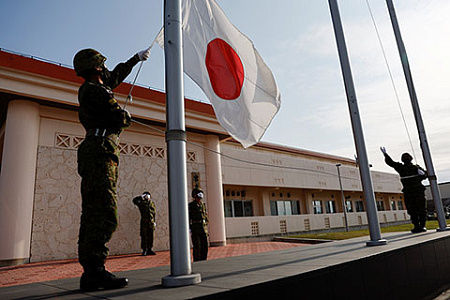China and North Korea are considered the closest threats to JapanThe political and military leadership of Japan is considering the possibility of a sharp increase in the country's defense budget to over 40 trillion yen ($279 billion) in the next five years.
For comparison: in the previous five years, in accordance with the Medium-term Defense Program, Japan's total military budget amounted to 27.47 trillion yen.
It is assumed that the total expenditures under the new program will not reach 50 trillion yen until 2027, but the value of 40 trillion is likely to be exceeded.
The relevant plans reflect the long-term policy of the Japanese government to "fundamentally strengthen" the country's defense potential in the face of intensive military construction in China and the rapidly growing nuclear missile threat from the DPRK.
One of the priorities of Japan's defense policy has been to increase military spending to 2% of the country's GDP, a standard indicator adopted in NATO countries.
Currently, Japan spends about 1% of its economy on military needs, or just over 5 trillion yen annually. To reach the planned 40 trillion yen mark over the next five-year period, Japan will have to increase spending by 1 trillion annually.
As the most priority areas for additional funding are allocated:
– development of the possibility of delivering operational and tactical strikes deep into enemy territory;
– development of a comprehensive air and missile defense system;
– development of unmanned strike systems;
– development of capabilities in the space sphere, in the electromagnetic spectrum and in cyberspace (cross-domain capabilities);
– integration of intelligence assets with control, targeting and communication systems;
– development of means of operational deployment and maneuver, primarily logistical capabilities for the transfer and supply of combat units to islands and archipelagos remote from the main territory of Japan.
In the field of procurement of new weapons and military equipment, Japan plans to pay attention primarily to large-scale purchases of long-range missiles. As well as the renewal of the fleet of multi-purpose fighter aircraft, the development of aircraft carriers and escort patrol fleet.
Japan's strike missile potential is planned to be expanded through a variety of cruise missiles (KR). In particular, Japan plans to purchase 1,500 long-range missiles in the coming years based on an upgraded version of the Type 12 anti-ship missile (PKR). This is a relatively cheap subsonic low-altitude RC deployed on surface ships, aircraft and ground container installations of the Japan Self-Defense Forces.
The planned purchase of a variant of the KR for hitting ground targets will have a significantly increased range (from the current 200-400 km to 1500-2000 km). And most likely it will not include an advanced radar guidance head with an active phased array antenna (AFAR). In parallel, the development of a supersonic RCC with a ramjet engine (RAMJET) ASM-3 continues.
Japan is also increasing purchases of foreign-made cruise missiles. In 2019 and 2020, two contracts were signed with Norway for the acquisition of the Joint Strike Missile (a variant of the Naval Strike Missile for an air carrier) with a total value of 450 and 820 million Norwegian kroner, respectively. The scope of delivery is not disclosed, but it can be assumed that we are talking about a batch of 40 to 70 missiles in size.
Joint Strike Missile is a subsonic cruise missile of reduced radar visibility with the ability to fly at extremely low altitudes with terrain envelope. The range ranges from 185 to 500 km, depending on the altitude profile of the flight.
It is important to note that a significant increase in Japan's military spending is taking place in the context of an unprecedented drop in the exchange rate of the yen against the dollar. This puts the Japanese military department in an extremely interesting position. Although the financial possibilities of importing weapons and military equipment from the United States and other Western countries are greatly reduced, domestic purchases of products of the national defense industry of Japan are becoming much more profitable.
This trend is well traced in the procurement of promising missile weapons. So, for example, the large-scale production of the Type 12 KR, apparently, can become an alternative to the acquisition of similar American-made JASSM KR.
On the other hand, given the high interdependence of Japan's military-industrial complex with the military-industrial complex of Western countries, the total costs of acquiring new weapons are likely to increase significantly, and the purchasing power of the Japanese military department will decrease. In addition, the real possibilities of mass production of missile weapons by the national military-industrial complex may not be sufficient to cover the needs of the Japanese Self-Defense Forces. That will leave no choice and will force you to resort to additional purchases of foreign analogues.
Vasily Ivanov

